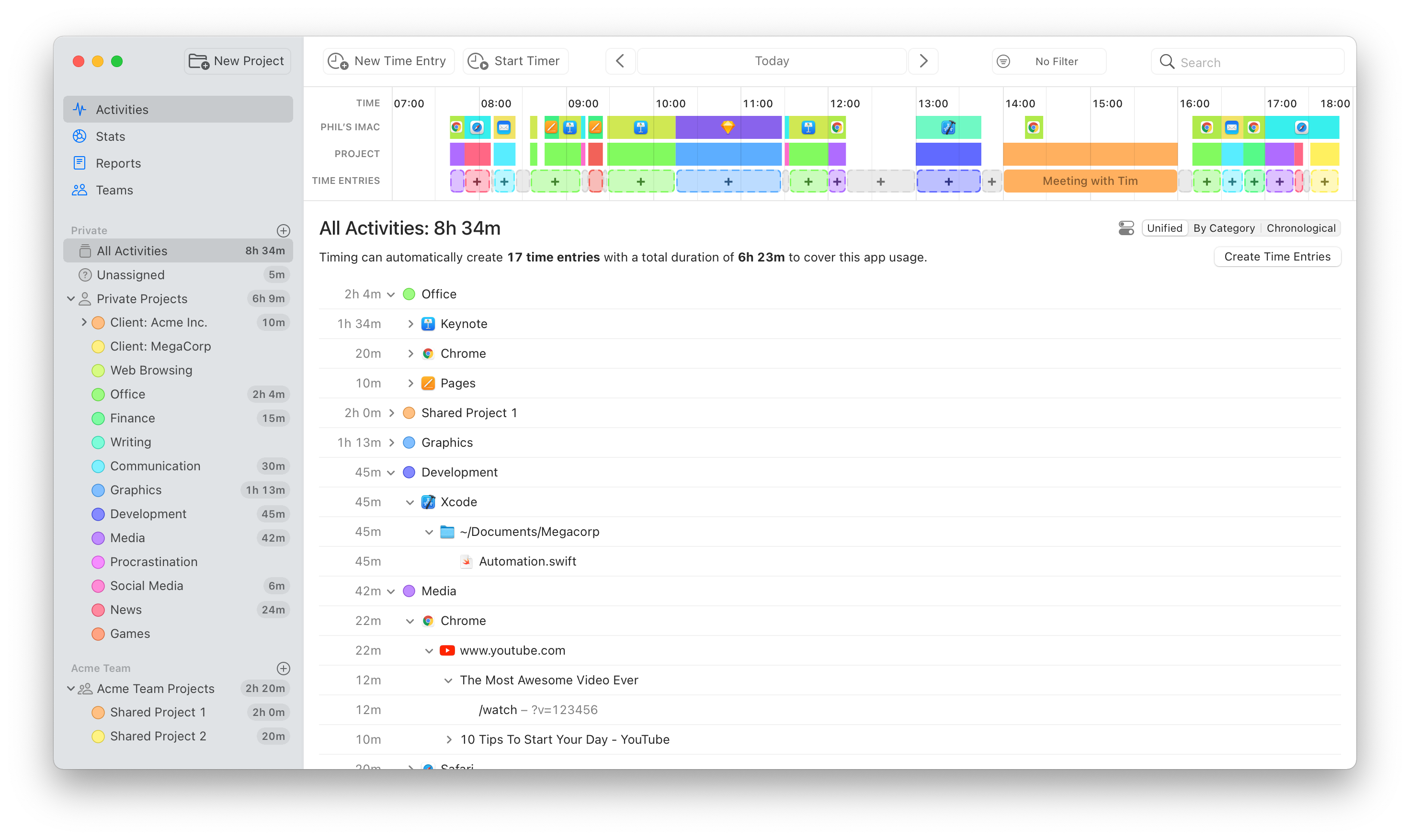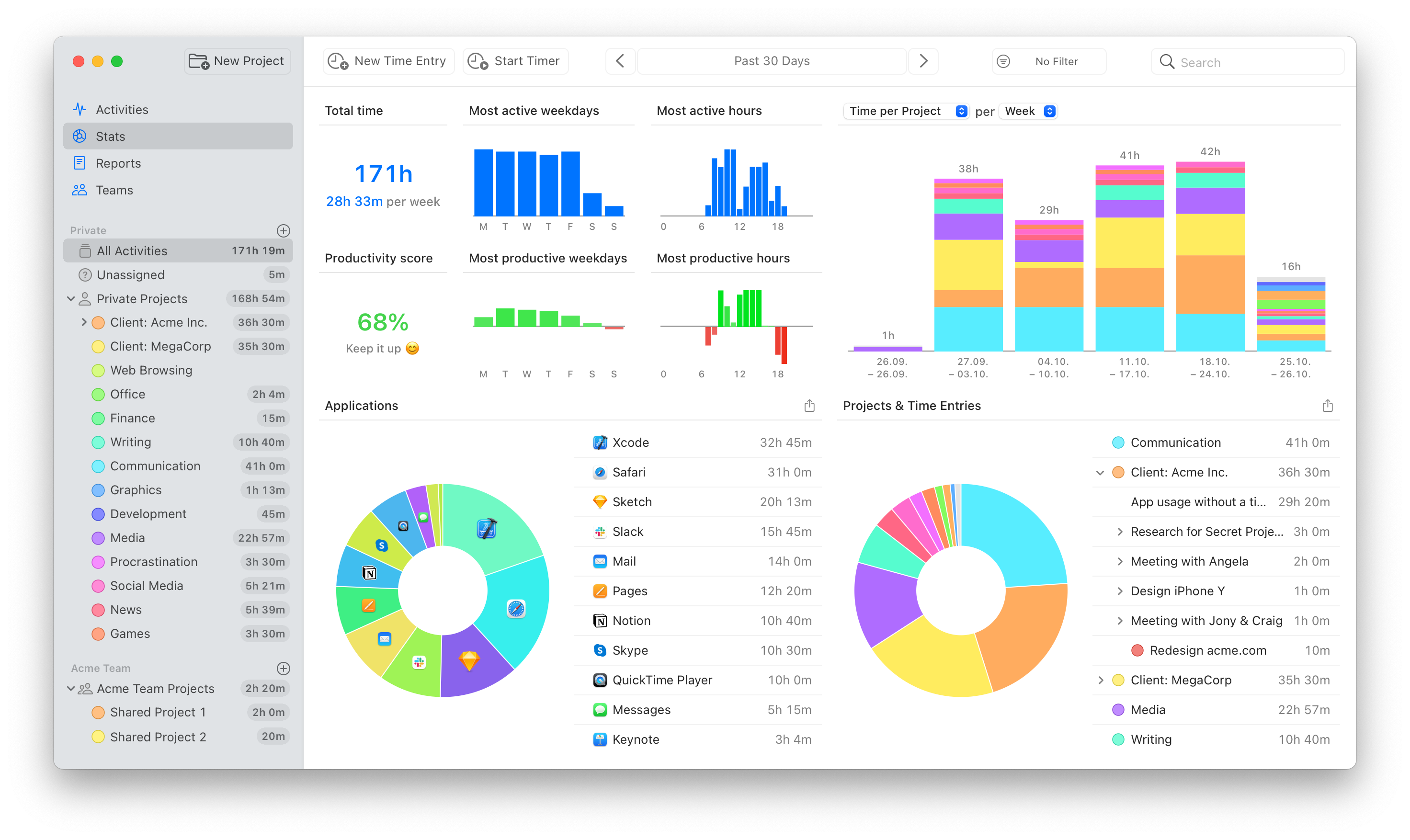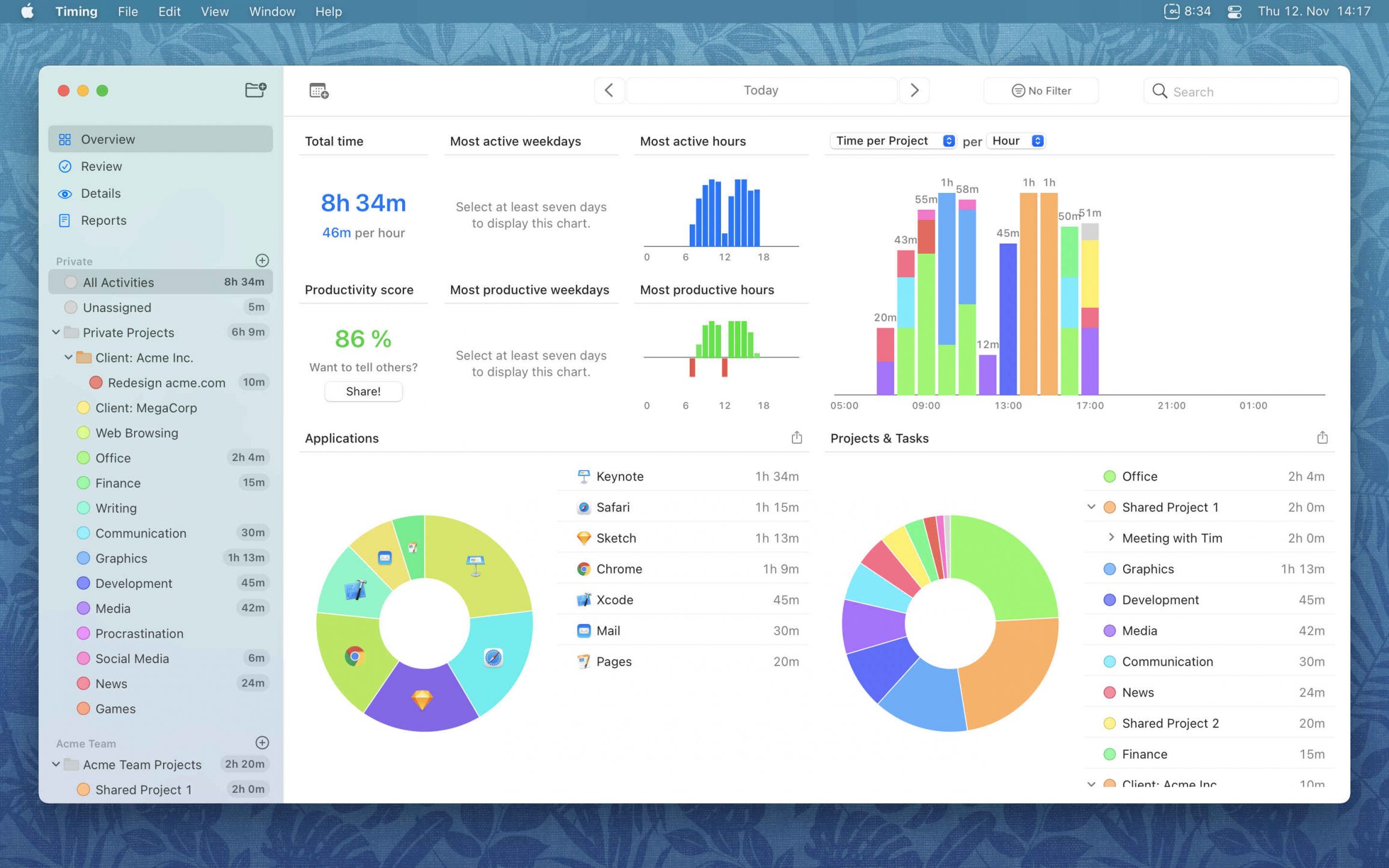Increase Project Profitability with These 7 Simple Strategies

Project profitability is one of the essential factors in building a thriving business. It helps you determine 1) whether or not a client is worth your time, effort, and resources and 2) which clients to prioritize. Due to this, project profitability is one of the most “bottom-line” minded measurements and one you should learn how to calculate and use to maximize your revenue and fuel growth.
In this post, we’ll explain what project profitability is precisely, why it’s important, how to calculate it, and steps you can take to improve your profitability on a project basis. Let’s jump right in.
Businesses that closely monitor project profitability are far more likely to see a positive ROI and make better decisions using objective data. Share on X
What is Profitability Per Project?
In its simplest terms, project profitability measures how much money you’ll earn from a client after factoring in total costs. Typically, this involves subtracting the total costs from the total billable amount. The amount left over — the total revenue — is the profitability per project.
Unlike other profitability measurements like rate realization analysis which analyzes earning potential, project profitability focuses on actual earnings after factoring in the costs of delivering a product or service.
It’s important because it guides your decision-making regarding which clients to work with and your priorities. If, for example, after calculating the profitability for a particular client, you found that the total revenue didn’t justify working with them, you would likely want to end the relationship.
Or, let’s say you wanted to compare the profitability of two clients head-to-head to determine which should get the bulk of your attention. If client A were significantly more profitable than client B, you would want to prioritize client A over client B. It can dramatically impact your business’s long-term trajectory and is a fundamental measurement you’ll want to grasp.
How to Calculate Project Profitability
There are a few different ways to go about it, but here’s one of the simplest ways to calculate it.
First, multiply your billable hours (the number of hours you spend working on a project that can be charged) by your billable rate (the amount you charge), and add on any other billable expenses (any expense you incur on a client’s behalf when working for them).
That will be your billable amount.
Next, multiply all hours spent on a project by your hourly rate (how much you charge per hour), and add on any other expenses (any additional costs that arise). That will be your total costs.
From there, subtract your total costs from your billable amount, which will be your total revenue.
In other words, billable amount – total costs = total revenue.
7 Ways to Increase Project Profitability
Now that we know about the basics of project profitability, let’s discuss five specific strategies you can use to increase it to make your business as profitable as possible.
1. Make Good Estimates
Let’s start from the top. Before agreeing to a project, you want to make a reasonable, accurate estimate. Not only is this critical for helping you identify how much you’ll earn at the end of the day and that “the numbers crunch,” it’s crucial for ensuring your client is on the same page and ultimately get the value they expect.
Although the specific way businesses approach estimates can vary, three essential components should help you make consistently good estimates.
First, ask the necessary questions to understand the full details of the project scope.

Here are six great questions to get the ball rolling.
- What services do you require?
- What services do you not require?
- What’s your expected completion date?
- What expectations do you have for this project?
- Do you want to see a complete breakdown of costs?
- Do you want to see an itemized breakdown of services?
Consider any additional costs, such as hiring a subcontractor and what competitors charge. Also, you’ll want to decide if you want to charge a client based on a fixed price or on time and material.
Second, look at similar projects you’ve done to determine how much time, resources, and money it took to complete them. Timing is an ideal solution for getting this information, as it provides you with comprehensive data on all your business activities from one simple dashboard. While every project is a little different, and looking at previous projects won’t tell you every detail, it’s a great way to get a general baseline of what to expect. By having this point of reference, you should have a good sense of what is involved with the preparation and the various stages from conception to completion.
Third, create a realistic timeline and completion date. The length of time it takes you to finish a project greatly impacts how much you ultimately earn. So it’s usually best to stay conservative and have some wiggle room for potential hiccups.
2. Define Successful Outcome
Another critical part of maximizing project profitability is identifying your goal precisely. Without clearly articulating what changes should happen because of your project, your team may lack clarity, which can create issues right from the start. Conversely, defining successful outcomes from the beginning sets the right tone for the project and gives you a clear direction so you can meet your objective with less friction along the way.
That’s why defining successful outcomes should be baked into your project planning process. It provides the direction needed to navigate your way from start to finish as quickly and efficiently as possible.
Regarding the formal definition of project outcomes, Indeed simply refers to them as the end result and changes that are achieved from your product or service.
As for criteria when defining successful outcomes, it typically starts with completing your project on time and staying on budget. But it goes much deeper than that. For instance, the outcome should meet or exceed the client’s expectations, with the product/service doing what it should.
The product/service should be easily implemented by the client, requiring a minimal learning curve and not disrupting their daily operations. And it should help the client achieve a new level of efficiency and productivity they could not attain before partnering with you.
Like most areas of business, the more clear you are when defining successful outcomes, and the more quantitative you get, the more likely you are to get the results you’re looking for. If, for example, a marketer was working on a project to help a SaaS company increase its subscriber count, its goal may be to raise the number of subscribers by 10% within three months after getting the campaign strategy approved.
3. Maintain Scope
Most projects start with a well-defined scope where you know exactly where you’re heading and what success entails. But, as in life, entropy often creeps in, and things change. Maybe the client changes a key objective midway through. Maybe a hiccup requires you to work longer than you initially anticipated. Or, unforeseen circumstances may result in you spending more to produce the agreed-upon deliverables.
Whatever the case, scope creep, which is “when a project’s completion requirements increase past the planned project requirement,” throws you off your game and takes a chunk out of profitability. And it’s far more common than you may think.
Research from the Project Management Institute found that:
- Half of all projects experience some type of scope creep
- Only 57% of projects finish within budget
- Only 51% of projects are completed on schedule
So we can’t stress the importance of maintaining scope throughout the phases of a project enough. Curveballs are inevitable. But they don’t have to derail you. The question is, how do you maintain scope and prevent scope creep from getting out of control?
As we mentioned earlier, it starts with good estimates where you fully understand the project scope by asking key questions. It’s helpful to use time tracking software to create data-driven proposals to ensure accurate bids for projects. And it’s also important to look at previous projects you’ve completed in the past that had similar requirements and scope — something that can be done with a time tracking app like Timing. By knowing what you’re trying to achieve from the get-go and how similar projects unfolded in the past, you’ll be in a better position to maintain scope.
Next, be clear about exactly who will be involved in decision-making. Many projects become sidetracked when too many people are involved in the approval process. For example, if five team members from a client’s company can make changes, you’ll quickly be in trouble. But if just one person has the final say, you’re much less likely to get bogged down in change requests and last-minute tweaks, which should keep things running smoother.
Task prioritization is also critical. At any given point during a project, you may have a dozen or more tasks to complete. But as the old saying goes, if you try to catch multiple rabbits at once, you won’t catch any. That’s why you need to be crystal clear about your primary objective at all times and methodically move through each task to stay on top of deadlines.
Besides that, communication both with your client and internally with other team members is essential. You must be vigilant about staying in the loop and keeping others in the loop to prevent minor issues from escalating into major ones and ensure everyone is on the same page.
4. Track Time
The fact that only 51% of projects finish on schedule shows us that time management significantly hinders project profitability. Not only does falling behind on a deadline create friction with a client, but it can also send your profitability plummeting, which is why we highly recommend automatically tracking your time with a tool like Timing.

It’s an easy-to-use tool that automatically tracks the apps, documents, and websites you visit, giving you a bird’s-eye view of what you worked on and how productive you were with an incredible level of detail. And unlike other tools where you have to set timers manually, Timing allows you to do this without any extra effort. With just a few clicks, you can review your time to see where you’re thriving and what needs improving. If you’ve tried similar platforms but have been frustrated with having to start and stop timers manually, Timing can be the perfect tool in your productivity arsenal.

Timing has smart suggestions for streamlining task scheduling, which lets you assign your time through a simple drag-and-drop interface. From there, it uses your timeline to create smart suggestions to combine blocks of time that make the most sense and efficiently move throughout your day.
Keeping accurate timesheets is also a cinch with Timing because it automatically tracks your work so you can always find what you worked on and for how long without worrying about manually starting a timer.
There are countless integrations with popular apps, and you can work on as many projects as you need by dragging and dropping them for perfectly accurate time management. Our calendar integration allows you to easily show entries from your Mac’s calendar app, so you can record time for your meetings with a single click. And with Timing’s Web API, you can sync it with your current billing and project management system to keep operations silky smooth.

5. Consider Utilization Rate
Another straightforward way to boost project profitability is to closely monitor the utilization rate of anyone who works for you — either in-house employees or subcontractors. The utilization rate is the time a person spends directly on client work concerning their total available work capacity.
This rate is meaningful because a high utilization rate means a person spends most of their time working directly on client-related tasks, which should lead to higher profitability. On the other hand, a low utilization rate means they’re not spending as much time on client-related tasks, which will likely lead to lower profitability.
The formula for calculating the utilization rate is as follows.
Work hours/Total available hours x 100% = Utilization rate
So if someone spends 35 hours working directly on a client project and has 40 available hours, you would calculate their utilization rate like this.
35/40 x 100% = 87.5% utilization rate
With most experts recommending a target utilization rate of 80% to 90%, 87.5% would be considered a good percentage. If, however, that number was less than 80%, it would mean they’ve fallen below the ideal target range. In that case, you would probably want to assign them more direct client work to utilize their time better and increase the output that goes toward your project.
6. Eliminate Low-Profit Margin Clients
When you zoom out and look at the numbers, you’ll find that some clients just aren’t worth the time, money, and resources you put into them. While you may have to occasionally take on a “not-so-profitable client” to establish your business and build relationships, it’s certainly not a habit you want to fall into.
That’s why you’ll want to pay close attention to the scope during the initial phases of a project to see what the client expects with deliverables. If what you’ll earn doesn’t align with a client’s expectations, it’s usually best to pass on a project before it starts. And if you’ve already worked with a client and know that it resulted in minuscule profit margins, they’re probably not a client you’ll want to work with again.
An easy way to identify low-profit margin clients is by using Timing’s reporting functionality for a holistic overview of your work across all devices. This lets you know exactly how much time you spend on each client with zero guesswork for complete clarity.
While turning down clients may be challenging when you’re just getting your business off the ground, it’s critical to your long-term success, as you should gradually work toward partnering with high-profit margin clients. In turn, you can continually refine your business until you have a portfolio of great paying clients — some of which you can get repeat projects from.
Repeat projects bring us to our final point.
7. Prioritize Client Retention
You’re probably well aware of the power of client retention. But for perspective, nearly 65% of business comes from repeat clients, and increasing retention by a mere 5% can boost profits by 25% to 95%. So rather than constantly chasing new clients, prioritizing client retention is a far more effective strategy, especially after working with a proven high-profit margin client.
Although this won’t always be possible with one-off clients, a sizable portion of clients would be interested in partnering with you for multiple projects, assuming you exceed expectations. Going the extra mile is essential; you should focus on building long-term relationships with vetted clients.
Project Profitability: A Critical Measurement
At the end of the day, you don’t want to partner with just anyone. You want to be sure a client has solid profit margins, especially if you plan on working with them on multiple projects. Project profitability is a simple yet critical measurement for evaluating a project’s profitability and whether or not it’s worth your time.
By understanding how to calculate this number and applying the seven strategies mentioned above, you should be able to increase your profitability and get the absolute most out of each client relationship. Also, using an automatic time tracking tool like Timing can give you the detailed insights needed to make the most of your time and become more profitable.
To begin improving your project profitability right away, download a 30-day free trial of Timing now.
